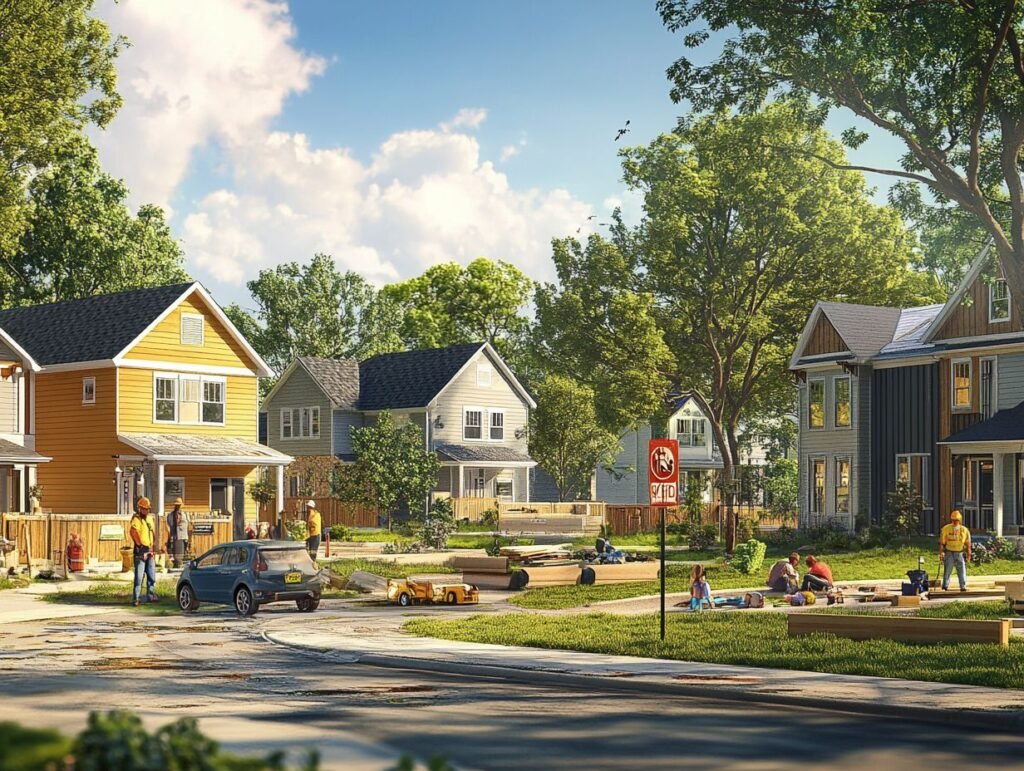Evanston, IL Welcomes New Home Development Initiatives For Local Residents

Analysis by Ken Opulent, Home Authority

Evanston, IL, is embarking on an ambitious initiative to enhance housing developments aimed at benefiting local residents. With a focus on increasing density and improving economic opportunities, the city seeks to create a vibrant community that welcomes both new residents and existing families.
Short Summary:
- Evanston launches Draft 2025-2029 Consolidated and Action Plans, prioritizing housing needs for low- and moderate-income residents.
- The Envision Evanston 2045 initiative aims to revise zoning codes to allow diverse housing options and promote economic growth.
- Public engagement is being emphasized, with meetings and workshops for resident input scheduled through early 2025.
New Housing Development Initiatives in Evanston, IL
The City of Evanston, situated along the picturesque shores of Lake Michigan just north of Chicago, is working to address housing shortages and economic challenges through the introduction of new home development initiatives. The local government has announced a public consultation period for its Draft 2025-2029 Consolidated Plan and Draft 2025 Action Plan, which will continue until December 17, 2024. These plans are essential for identifying urgent housing, community, and economic development needs, particularly for underserved populations.
“Our mission is to provide decent housing and create economic opportunities that contribute to a suitable living environment for all residents,” stated a city official during the announcement.
The Draft 2025 Action Plan lays out how funding from the U.S. Department of Housing and Urban Development (HUD) through programs like Community Development Block Grant (CDBG) and HOME Investment Partnership (HOME) will be utilized. Aiming to enhance the overall living conditions for low- and moderate-income families, Evanston’s plans underscore the importance of public participation in shaping community preferences and inputs.
Promoting Public Engagement
The city encourages residents to provide feedback on these draft plans, highlighting the importance of local input. Draft plans are accessible online at cityofevanston.org/conplan, as well as at local branches of the Evanston Public Library. In addition to written comments, residents are invited to attend upcoming meetings of the Housing & Community Development Committee on November 19 and December 17, both commencing at 7 p.m. at the Morton Civic Center.
The emphasis on community engagement is reflected in the City’s Citizen Participation Plan (CPP), which aims to ensure that all stakeholders have their voices heard throughout the development of the city’s various planning documents.
Envision Evanston 2045 Initiative
In a parallel effort, the Envision Evanston 2045 initiative has been making significant strides since its launch in February. This comprehensive plan aims to be a blueprint for the city’s growth over the next two decades. This initiative will reshape Evanston’s zoning codes and land use planning to reflect the evolving needs of its residents.
During recent City Council meetings, Planning Manager Liz Williams explained the necessity of increasing residential density as Evanston encounters land constraints, given its urban location amidst other municipalities and its proximity to Lake Michigan. The primary observation driving the discussions is succinct: “We are running out of land, and people cannot find housing.” To this end, proposals under consideration include:
- Facilitating construction of diverse housing options such as duplexes and triplexes across the city.
- Eliminating minimum parking requirements and promoting residential developments aligned with public transit.
- Implementing policies aimed at preventing displacement and increasing residential density in growth-appropriate areas.
- Streamlining the zoning code by reducing the number of districts while broadening permissible uses.
“We can’t grow out,” Williams emphasized, driving home the point that increasing density is the key to accommodating future population growth.
Support from City Council Members
City Council members broadly support these initiatives and have encouraged the development of numeric targets for new housing. Council Member Bobby Burns expressed enthusiasm for growing the city, while Jonathan Nieuwsma advocated for additional residential density in downtown Evanston as a means of post-pandemic recovery.
However, while the emphasis on increased density is welcome, Council Member Melissa Wynne reminded colleagues that the city should maintain a diverse mix of housing types, pointing out that currently restricted R1 neighborhoods historically accommodated a range of dwelling types. Wynne passionately remarked, “A variety of housing types and increased density can live together very harmoniously.”
Ensuring Unique Character in Development
While the City’s focus on housing density has garnered support, some members caution against homogenizing Evanston’s unique business districts. Council Member Nieuwsma voiced concerns about maintaining the character of local commercial areas, which greatly contribute to Evanston’s identity.
“We want to maintain a unique identity,” Nieuwsma cautioned, in response to the urgency for new development. “Those unique business districts are where I’m most excited to see that continue.”
Looking Ahead to Future Developments
As part of the ongoing community engagement process, the City plans to host further workshops and discussions designed to gather input on specific zoning proposals. Mayor Daniel Biss noted the urgency of the initiative, as it must conclude before the current council’s term ends, thereby establishing an electoral timeline for adopting the new code and plan.
“It would not be a full attainment of this council’s commitment to the community if we didn’t complete this before the next council was sworn in,” he asserted. City staff are set to bring forth continual updates and solicit legislative feedback as the plan progresses, indicating an inclusive pathway for stakeholder input.
Challenges and Opportunities in Housing Affordability
Despite the focus on developing housing density, discussions surrounding affordability remain critical. Notably, Mayor Biss emphasized the goal of making housing attainable for essential service workers while addressing broader market influences that may hinder affordability. A historical look at Cincinnati’s experience with zoning regulations illuminates the challenges Evanston faces regarding affordable housing solutions. National figures, including former President Barack Obama, have championed the need to eliminate restrictive zoning practices to facilitate increased residential construction.
“If we want to make it easier for more young people to buy a home, we need to build more units and clear away some of the outdated laws and regulations that have made it harder,” Obama noted.
Despite newly burgeoning apartments, Evanston continues to grapple with balancing density and affordability. An analysis of housing trends reveals that while the city has significant capacity to accommodate more residents, care must be taken to ensure that new developments do not lead to increased cost-of-living pressures for current residents.
A Collaborative Approach Forward
Recognizing the complex interaction between zoning changes, housing availability, and market dynamics, stakeholders will need to work collaboratively to create proposals that not only enhance density but also ensure affordability. Innovative solutions, such as permitting small multi-family buildings in R-1 and R-2 districts while prioritizing affordability for residents, could serve as positive steps forward.
As Evanston navigates these myriad initiatives, it remains evident that inclusivity and thoughtful community input will be pivotal in crafting sustainable housing strategies that enhance the quality of life for all. The ongoing dialogue among council members, city staff, and residents illustrates a commitment to fostering a vibrant, diverse, and affordable Evanston.
